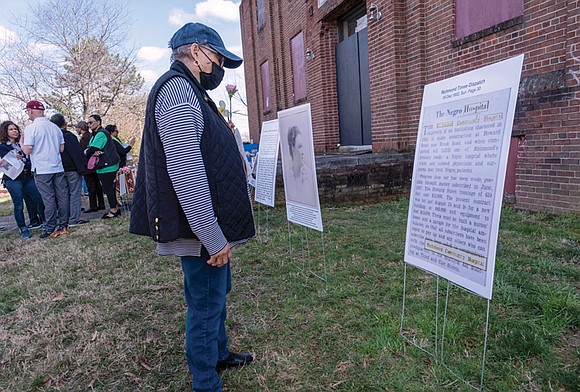JXN Project to VUU: Do not contribute to efforts to erase Black histories
3/14/2024, 6 p.m.

ATTN: Virginia Union University President Hakim Lucas and Board of Trustees
The JXN Project, also known as JXN, is a research-based reparative historic preservation non-profit organization that is dedicated to driving restorative truth telling and redemptive storytelling. As part of this mission, the project is committed to capturing the pivotal role of Richmond, in particular Jackson Ward, in the evolution of the Black American experience by recontextualizing its origin story as the nation’s first historically registered Black urban neighborhood.
JXN’s work is guided by eight key pillars to include public art, public engagement, public programming, and public service, policy and or planning, as well as pedagogy, philanthropy, proprietorship — and most importantly — preservation. Currently, the project is engaged in a historic preservation initiative called “The Skipwith-Roper Homecoming,” which is a campaign to reconstruct the home of Abraham Peyton Skipwith as the ward’s first known Black homeowner and whom the project regards as “The Founding Father of Jackson Ward.”
With it being said that 1 in 4 Black Americans can retrace their roots to the rivers in the Richmond region, the reconstruction site plans to emerge as a destination of choice during America 250. This homecoming initiative is timely as the role of infrastructure projects, like the Richmond-Petersburg Turnpike, in disconnecting communities of color, like Jackson Ward, which was recently on the annual America’s 11 Most Endangered Historic Places List by the National Trust for Historic Preservation, is currently at the center of public discourse.
As part of this discourse, Jackson Ward has an opportunity to emerge as a leading case study in how the field of historic preservation reconsiders which sites are worth saving to ensure that conservation efforts are diverse, equitable, inclusive, accessible, and just as many Black and Indigenous sites have either been forcibly and or unfairly dismantled, displaced, dilapidated — or all together destroyed. In the spirit of the project’s mission and vision for the city’s sixth ward, we would ask that you please consider this letter of opposition to the proposed destruction of the Richmond Community Hospital by Virginia Union University.
As you know, this historic hospital was built in 1932 under the leadership of its founder Dr. Sarah Garland Boyd Jones – the first Black woman to earn certification by the Virginia Medical Examining Board on April 27, 1893.
Dr. Boyd Jones, born in February 1866, hailed from a local family whose contributions to Jackson Ward can be dated to earlier than the Civil War – with her father helping to construct Sixth Mount Zion Baptist Church and the Great Hall for the Grand Fountain United Order of the True Reformers. She attended the Richmond Colored Normal School with John Mitchell Jr. and Maggie Lena Walker and taught alongside Rosa L. Dixon Bowser at the Baker School – which too was constructed by her father. After graduating from Howard University Medical School in 1893, she practiced with the Southern Aid and Insurance Company and Woman’s Corner Beneficial Association. She also founded the Medical and Chirurgical Society of Richmond and Richmond Hospital Association.
In 1903, she and her husband, Dr. Miles B. Jones, opened what would become known as the Richmond Hospital Association and Medical College, as well as the Training School for Nurses, which was located at 406 E. Baker St.
She died at her home, which was located at 908 N. 3rd St., on May 11, 1905, and was laid to rest at Evergreen Cemetery.
Both of these since demolished properties are particularly important to our project as they once bookended the location of the reconstruction site for the Skipwith-Roper Cottage at the intersection of Bates, Preston, and 3rd Street.
With that said, in closing, as the city’s only Historically Black College and University,
The JXN Project fervently hopes that Virginia Union University will not further contribute to the many concerted efforts across the city, commonwealth, and country to erase Black histories, like the Richmond Community Hospital, as well as Dr. Miles Jones and Dr. Sarah Garland Boyd Jones.
Signed with hopes of sincere consideration,
Sesha Joi Moon, Ph.D.
The JXN Project, Executive Director and Virginia Union University Donor, Inez Orzene Jaudon Johnson Endowed Scholarship Fund







